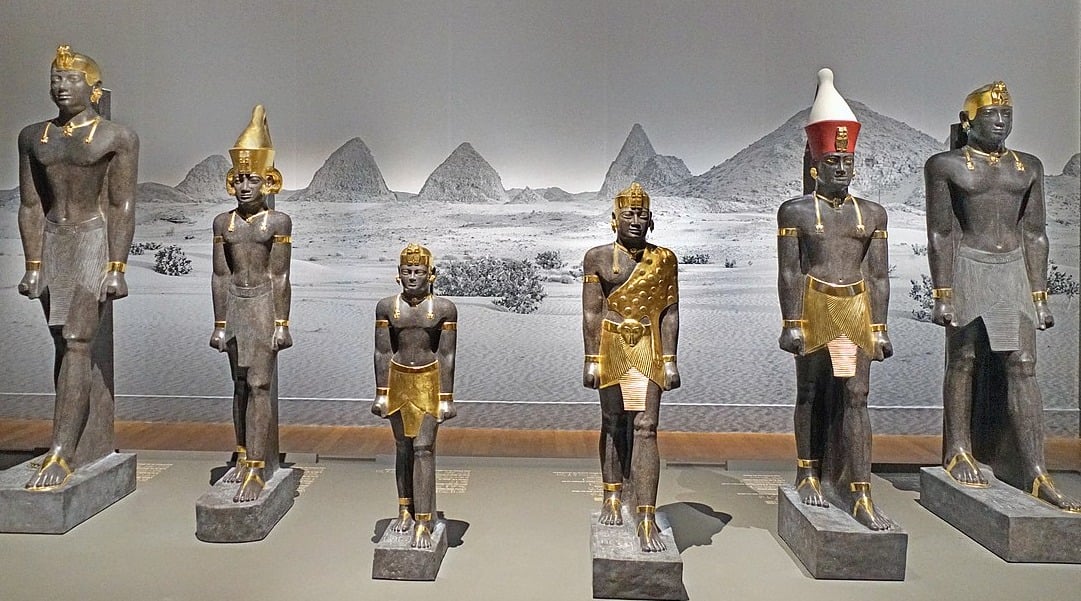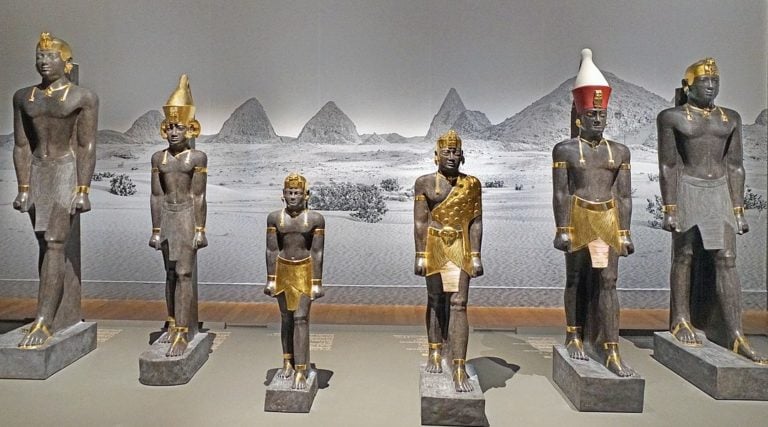
 300w,
300w,  1024w,
1024w,  768w,
768w,  150w,
150w,  600w,
600w,  696w,
696w,  1392w" data-lazy-sizes="(max-width: 1081px) 100vw, 1081px" data-lazy-src="https://greekreporter.com/wp-content/uploads/2023/05/25-dynasty-pharhaos-credit-Jean-Pierre-Dalbera-CC-BY-20-wikimedia-commons.jpg" data-ll-status="loaded" />
1392w" data-lazy-sizes="(max-width: 1081px) 100vw, 1081px" data-lazy-src="https://greekreporter.com/wp-content/uploads/2023/05/25-dynasty-pharhaos-credit-Jean-Pierre-Dalbera-CC-BY-20-wikimedia-commons.jpg" data-ll-status="loaded" />Netflix’s Queen Cleopatra docuseries has caused an immense storm of controversy surrounding its depiction of Cleopatra VII Philopator as a black woman, and whilst Cleopatra herself was not black, there were indeed black pharaohs who ruled over Egypt at one point in the 8th and 7th centuries BC.
The 25th Dynasty, also known as the Nubian Dynasty, or Black Pharaohs, ruled Egypt between 744 BC and 656 BC as part of the wider Kushite Empire. The 25th Dynasty originated from the city-state of Napata in Nubia, in what is today Sudan.
The Nubian Kushite civilization, from whom the 25th Dynasty originated, could, like the Egyptians, boast of impressive architectural, artistic, and cultural achievements. Sadly, this enigmatic civilization has been overshadowed by its better-known members and does not achieve the attention it deserves in a mainstream setting.
The Black Pharaohs: 25th Dynasty Egypt
The 25th Dynasty’s rise to power began with King Piye, who launched a military campaign into Egypt and successfully captured Memphis, the capital, in 727 BC. Piye proclaimed himself pharaoh and initiated the Kushite Dynasty’s rule over Egypt, although it was his successor, Shebitku, who fully established Kushite control over Egypt after defeating King Bakenranef of the rival 24th Dynasty at the Battle of Sais.
Subsequent kings of the dynasty, including Shabaka, Shebitku, Taharqa, and Tanutamun, continued to consolidate their power and assert their authority over Egypt.
The Kushite pharaohs of the 25th Dynasty implemented various policies during their rule. They sought to restore traditional Egyptian religious practices and fostered a revival of the old cults and temples. The Kushite rulers emphasized their legitimacy by aligning themselves with Egyptian traditions and presenting themselves as champions of Ma’at (order and justice).
The Black Pharaohs erected grand structures and renovated existing temples, leaving behind a rich architectural legacy. As noted by Caroline H. Armstrong, “Taharqa was the greatest builder among the Kushite rulers” and he embarked on ambitious construction projects, such as the expansion of the Temple of Amun at Karnak in Thebes, which showcased his commitment to the revitalization of Egyptian religious sites.
Kushite Pyramids

 300w,
300w,  768w,
768w,  150w,
150w,  600w,
600w,  696w,
696w,  1392w" data-lazy-sizes="(max-width: 796px) 100vw, 796px" data-lazy-src="https://greekreporter.com/wp-content/uploads/2023/05/Nubian-Pyramids-credit-Wufei07-Public-Domain-Wikimedia-Commons.jpg" data-ll-status="loaded" />
1392w" data-lazy-sizes="(max-width: 796px) 100vw, 796px" data-lazy-src="https://greekreporter.com/wp-content/uploads/2023/05/Nubian-Pyramids-credit-Wufei07-Public-Domain-Wikimedia-Commons.jpg" data-ll-status="loaded" />The Kushite kings of Egypt were also keen to initiate a revival of pyramid building in their new realm, bringing about a resurgence of monumental tombs to the Egyptian landscape. This revival occurred approximately 1,000 years after Egyptian burial practices had evolved away from pyramid construction.
The 25th Dynasty, introduced their own pyramids, showcasing their cultural and political connection to ancient Egypt. The construction of Nubian pyramids commenced at El Kurru in 751 BC, initially serving as the final resting place for Piye, the inaugural ruler of the Twenty-fifth Dynasty. Subsequently, additional pyramids were erected at the Nuri site.
Nubian pyramids were modeled after a distinct form of Egyptian private elite family pyramids that had been prevalent during the New Kingdom era, spanning from 1550 BC to 1069 BC. These structures embodied the architectural style and symbolism of ancient Egypt, reflecting the continuity and reverence for the traditions of the pharaohs.
It is noteworthy that a greater number of Nubian pyramids have survived to the present day compared to their Egyptian counterparts. This fact highlights the enduring nature of the Nubian pyramid structures, which have withstood the test of time.
The revival of pyramid construction during the Twenty-fifth Dynasty not only rekindled the ancient Egyptian burial practices but also showcased the cultural exchange and historical ties between Nubia and Egypt. The Nubian pyramids stand as enduring testaments to the artistry, engineering prowess, and cultural interplay of these fascinating civilizations.

:max_bytes(150000):strip_icc():format(webp)/Sphinx_of_Taharqo_oblique_view-56df36355f9b5854a9f6aef5.jpg)